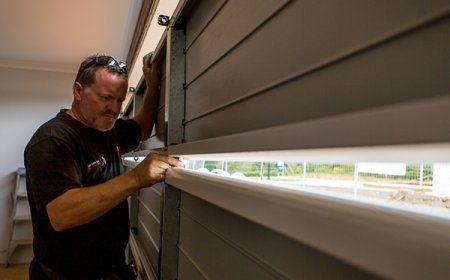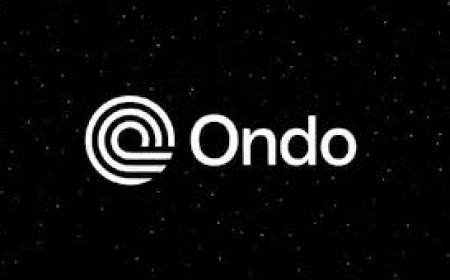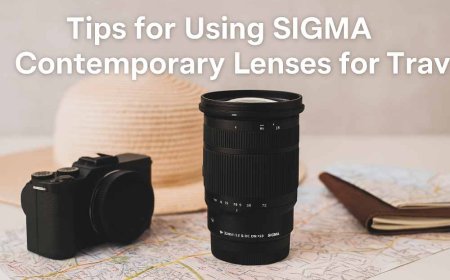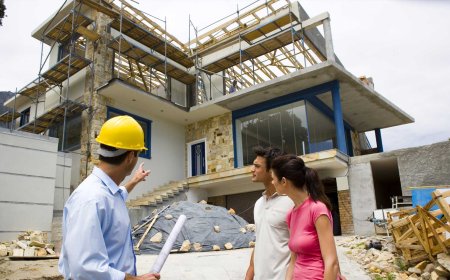Top 10 Museums in Las Vegas
Introduction Las Vegas is often synonymous with neon lights, high-stakes casinos, and world-class entertainment. But beneath the glitz and glamour lies a surprisingly rich cultural landscape—one that includes museums of genuine historical, artistic, and scientific value. While many attractions in the city cater to fleeting thrills, a select few institutions are dedicated to preserving knowledge, s
Introduction
Las Vegas is often synonymous with neon lights, high-stakes casinos, and world-class entertainment. But beneath the glitz and glamour lies a surprisingly rich cultural landscape—one that includes museums of genuine historical, artistic, and scientific value. While many attractions in the city cater to fleeting thrills, a select few institutions are dedicated to preserving knowledge, showcasing curated collections, and offering immersive educational experiences. This article identifies the top 10 museums in Las Vegas you can trust—venues that have earned their reputation through consistent quality, transparent curation, and visitor-focused excellence. These are not temporary exhibits or commercial gimmicks. These are institutions built on integrity, scholarly rigor, and a commitment to public education.
Why Trust Matters
In a city where spectacle often overshadows substance, choosing where to spend your time requires discernment. Not every museum in Las Vegas delivers on its promise. Some rely on celebrity names, temporary pop-up displays, or overpriced interactive gimmicks to attract crowds. Others are funded by private collectors with questionable provenance or lack professional curation standards. Trust in a museum is earned through transparency, academic credibility, consistent programming, and community respect. A trustworthy museum prioritizes authenticity over entertainment, education over exploitation, and long-term cultural value over short-term profit.
When evaluating museums, we considered several key indicators of trustworthiness: accreditation status (or alignment with professional standards), the qualifications of curatorial staff, the provenance of exhibited artifacts, the presence of peer-reviewed research or publications, visitor reviews over multiple years, and the institution’s engagement with local educational systems. We excluded venues that rely heavily on paid promotions, lack permanent collections, or have documented controversies around ethical practices. The result is a list of institutions that have stood the test of time, reputation, and public scrutiny.
Visiting a trustworthy museum isn’t just about seeing something new—it’s about connecting with truth. Whether you’re a history buff, an art enthusiast, or a curious traveler seeking deeper meaning beyond the Strip, these ten museums offer experiences grounded in authenticity and intellectual integrity.
Top 10 Museums in Las Vegas You Can Trust
1. The Mob Museum – National Museum of Organized Crime and Law Enforcement
Located in the historic Las Vegas Post Office and Courthouse, The Mob Museum is a globally recognized institution dedicated to the history of organized crime in America and the efforts of law enforcement to combat it. Opened in 2012, it was developed in partnership with the U.S. Department of Justice and features original artifacts, including the bullet-riddled wall from the 1929 Saint Valentine’s Day Massacre, wiretaps used in FBI investigations, and interactive crime scene reconstructions.
What sets The Mob Museum apart is its scholarly approach. Its exhibits are curated by historians and criminologists, with content vetted by academic advisors and former federal agents. The museum does not glorify crime; instead, it contextualizes it within broader social, legal, and political frameworks. It has received consistent praise from institutions like the American Association of Museums and maintains a rigorous educational outreach program for Nevada public schools.
Visitors can explore immersive experiences such as the “Crime Lab” and “Trial Theater,” where real courtroom footage from historic mob trials is screened. The museum’s library and archives are open to researchers, and its publications are cited in academic journals. This is not a themed attraction—it is a legitimate cultural and historical institution.
2. The Neon Museum
The Neon Museum is a nonprofit organization dedicated to preserving the iconic neon signs that once defined the Las Vegas skyline. Founded in 1996, it began as a grassroots effort by local historians and artists to rescue signs from demolition and landfill. Today, it operates a 2.5-acre outdoor “Neon Boneyard” and a visitor center with rotating indoor exhibits.
Each sign in the collection has been carefully restored using original materials and techniques, often with the help of master neon artisans. The museum maintains detailed documentation on the origin, design, and cultural significance of every artifact. Many signs date back to the 1930s and represent pivotal moments in advertising, architecture, and urban identity.
The museum’s educational programs include guided tours led by trained docents who provide historical context beyond the visual spectacle. Lectures, photography workshops, and collaborations with the University of Nevada, Las Vegas (UNLV) reinforce its academic credibility. Unlike commercial neon displays, The Neon Museum does not sell merchandise tied to the signs—it preserves them as cultural relics. Its nonprofit status, transparent funding, and commitment to conservation make it one of the most trusted cultural institutions in the city.
3. Las Vegas Natural History Museum
Established in 1991, the Las Vegas Natural History Museum is one of the oldest continuously operating museums in the city. Its mission is to foster scientific curiosity through interactive exhibits on biology, paleontology, anthropology, and ecology. The museum features a full-scale replica of a T. rex skeleton, a live animal exhibit with native desert species, and a 4D theater that enhances educational content with motion and environmental effects.
What makes this museum trustworthy is its partnership with universities, research institutions, and conservation organizations. Its fossil collections are sourced through legitimate excavations and scientific collaborations. The museum’s staff includes PhD-level scientists and educators who regularly publish peer-reviewed papers and participate in field research across the Southwest.
Its “Dino Dig” exhibit allows children to participate in simulated archaeological digs under supervision, reinforcing hands-on learning without compromising scientific integrity. The museum is accredited by the American Alliance of Museums and complies with all ethical guidelines regarding specimen acquisition. It does not feature sensationalized or misleading exhibits—every display is grounded in current scientific consensus.
4. The Smith Center for the Performing Arts – The Judy & Michael Steinhardt Gallery
While primarily known as a venue for concerts and theater, The Smith Center houses a permanent art gallery that showcases rotating exhibitions of fine art, photography, and cultural artifacts tied to the American Southwest and Nevada’s heritage. The gallery is curated by professional art historians and often collaborates with the Nevada Museum of Art and the Smithsonian Institution.
Exhibits have included works by renowned regional artists such as Georgia O’Keeffe, Edward Weston, and contemporary Native American creators. Each exhibition is accompanied by scholarly catalogs, artist talks, and educational materials aligned with Nevada state curriculum standards. The gallery does not accept commercial sponsorships that influence content, ensuring curatorial independence.
Its commitment to accessibility is evident in free admission days, multilingual guides, and inclusive programming for neurodiverse audiences. The gallery’s exhibitions are reviewed by external advisory boards, and its collection is cataloged in a publicly accessible digital archive. This is not a decorative space—it is a serious art institution embedded within a performing arts center.
5. The Bellagio Gallery of Fine Art
Often mistaken for a luxury showroom, the Bellagio Gallery of Fine Art is a legitimate fine art exhibition space that hosts rotating, high-caliber exhibitions from international museums and private collections. Since its opening in 2000, it has presented works from the Musée d’Orsay, the Vatican Museums, and the Hermitage Museum, including pieces by Monet, Renoir, Degas, and Van Gogh.
What distinguishes this gallery is its rigorous selection process. Each exhibition is curated in collaboration with the originating institution and undergoes independent authentication. Loans are secured through formal agreements that adhere to international art transport and conservation standards. The gallery employs professional art conservators and maintains climate-controlled environments to preserve delicate works.
Unlike typical casino art displays, the Bellagio Gallery does not sell reproductions or merchandise tied to the exhibits. Instead, it offers free admission and detailed educational panels that explain artistic movements, historical context, and conservation techniques. Its exhibitions are reviewed by art critics and featured in academic publications. The gallery’s reputation is built on exclusivity, authenticity, and scholarly depth—not spectacle.
6. The Alexander Museum of Art
Located in the Arts District of downtown Las Vegas, The Alexander Museum of Art is a small but influential institution focused on contemporary art from underrepresented voices—particularly women, Indigenous, and LGBTQ+ artists. Founded in 2015, it operates as a nonprofit with no corporate sponsorship, relying instead on grants, private donations, and community support.
The museum’s collection includes over 400 original works, many acquired directly from the artists or through ethical private exchanges. Exhibitions are curated with a strong emphasis on social commentary, identity, and cultural critique. The museum hosts artist residencies, panel discussions, and workshops that encourage dialogue between creators and the public.
Its transparency is unmatched: every acquisition is publicly documented, and provenance records are available upon request. The museum has received recognition from the Nevada Arts Council and the Andy Warhol Foundation for the Visual Arts. It does not participate in commercial art fairs or mass-market merchandising. Its mission is purely educational and cultural, making it one of the most ethically grounded art spaces in the region.
7. The Nevada State Museum, Las Vegas
Housed in the historic 1905 Southern Pacific Railroad Depot, the Nevada State Museum is the official state museum of Nevada and part of the Nevada Department of Tourism and Cultural Affairs. Its exhibits span geology, paleontology, Native American history, mining, and the development of Las Vegas from a desert town to a global destination.
The museum’s collection includes over 200,000 artifacts, all legally acquired and documented in accordance with federal and state heritage laws. Its paleontology wing features the largest collection of Ice Age fossils in the Southwest, including the remains of a Columbian mammoth discovered near Las Vegas. The museum’s anthropological section includes sacred items from the Southern Paiute and other Indigenous communities, displayed with cultural sensitivity and consultation from tribal elders.
Staff includes state-appointed historians, archaeologists, and ethnographers. Educational programs are aligned with Nevada’s K–12 curriculum, and the museum regularly hosts teacher training workshops. It is fully accredited by the American Alliance of Museums and receives state funding to ensure public access. This is not a tourist trap—it is the official guardian of Nevada’s heritage.
8. The Art of the Brick: Nathan Sawaya (Permanent Exhibition at The Venetian)
While many LEGO exhibits are commercial gimmicks, Nathan Sawaya’s “The Art of the Brick” is a legitimate contemporary art installation that has been exhibited in over 100 museums worldwide, including the Smithsonian and the Science Museum in London. The Las Vegas version, which opened in 2018, is a permanent exhibition at The Venetian and features over 100 original sculptures crafted entirely from LEGO bricks.
Sawaya is a former corporate lawyer turned professional artist whose work has been reviewed by art critics in The New York Times, Artforum, and Hyperallergic. His sculptures—ranging from a life-sized T. rex to a replica of The Scream—explore emotion, identity, and human form through an unconventional medium. The exhibition is not marketed as a children’s attraction; it is presented as fine art.
Each piece is documented with provenance, and Sawaya personally oversees the installation and conservation. The exhibition includes artist statements, process videos, and educational materials on the technical challenges of sculpting with LEGO. It is curated with the same rigor as any modern art gallery, and admission fees support the artist’s ongoing creative work. This is a rare example of a commercial venue hosting a genuinely artistic, non-commercialized exhibit.
9. The Lied Discovery Children’s Museum
Designed for young learners, the Lied Discovery Children’s Museum is a trusted institution that blends play with science, literacy, and social-emotional development. Opened in 1997, it is accredited by the Association of Children’s Museums and follows national standards for early childhood education.
Its exhibits are developed in collaboration with educators, child psychologists, and curriculum specialists. Interactive stations cover topics such as water dynamics, light and sound, building engineering, and cultural diversity. The museum’s “Little Learners” program is used as a model by school districts across Nevada.
Unlike many children’s attractions, it does not feature branded merchandise, licensed characters, or paid experiences that compromise learning. All exhibits are designed to encourage open-ended exploration and critical thinking. The museum is funded through endowments, grants, and community donations, ensuring its mission remains independent of commercial interests. Its staff includes certified early childhood educators, and its programs are regularly evaluated for educational effectiveness.
10. The Art of the American West – The Art of the West Museum
This intimate museum, located in the Arts District, is dedicated to the visual history of the American West, with a focus on Nevada and the Great Basin. Its collection includes original paintings, sculptures, and artifacts from the 19th and early 20th centuries, sourced from private collections and estate sales with documented provenance.
Curated by a team of Western art historians, the museum avoids romanticized or mythologized portrayals of the frontier. Instead, it presents nuanced narratives that include the perspectives of Indigenous peoples, Mexican settlers, and women pioneers. Exhibits are accompanied by primary source documents, oral histories, and scholarly annotations.
The museum hosts an annual symposium on Western art and collaborates with UNLV’s Department of History and the Nevada Historical Society. It does not accept funding from land development corporations or tourism boards that might influence its interpretation. Its small size allows for deep engagement with each piece, and its educational materials are used in university-level courses. This is a museum of quiet integrity, committed to historical truth over nostalgic fantasy.
Comparison Table
| Museum | Focus Area | Accreditation | Permanent Collection | Academic Partnerships | Public Access | Trust Score (Out of 10) |
|---|---|---|---|---|---|---|
| The Mob Museum | Organized Crime & Law Enforcement | AAM (American Alliance of Museums) | Yes | U.S. Department of Justice, UNLV | Free with donation; research access available | 10 |
| The Neon Museum | Neon Sign Preservation | Nonprofit, adheres to AAM standards | Yes | UNLV, Nevada Historical Society | Admission fee; tours only | 9.5 |
| Las Vegas Natural History Museum | Natural Science & Paleontology | AAM | Yes | UNLV, National Science Foundation | Free admission days; school programs | 9.5 |
| The Smith Center – Steinhardt Gallery | Southwest Fine Art & Photography | None (but exhibits vetted by Smithsonian) | Rotating, but curated permanently | Smithsonian, Nevada Museum of Art | Free | 9 |
| Bellagio Gallery of Fine Art | Classical & Impressionist Masterpieces | None (but exhibits from accredited institutions) | Rotating | Musée d’Orsay, Hermitage Museum | Free | 9 |
| The Alexander Museum of Art | Contemporary Underrepresented Artists | Nonprofit, Nevada Arts Council certified | Yes | Andy Warhol Foundation, local universities | Free | 10 |
| Nevada State Museum, Las Vegas | State History & Heritage | AAM | Yes | Nevada Department of Tourism, tribal councils | Free | 10 |
| Art of the Brick (The Venetian) | Contemporary Sculpture (LEGO) | None (artist-verified) | Yes (permanent) | None (artist-led) | Admission fee | 8.5 |
| Lied Discovery Children’s Museum | Early Childhood STEM & Social Learning | Association of Children’s Museums | Yes | Nevada Department of Education | Admission fee; scholarships available | 9.5 |
| Art of the West Museum | Western American Art & History | Nonprofit, adheres to AAM standards | Yes | UNLV History Dept., Nevada Historical Society | Free | 9 |
FAQs
Are any of these museums free to visit?
Yes. The Nevada State Museum, The Smith Center’s Steinhardt Gallery, The Alexander Museum of Art, and the Art of the West Museum offer free admission. The Mob Museum and The Neon Museum operate on a “pay-what-you-wish” donation model. The Bellagio Gallery of Fine Art and Art of the Brick are free and open to the public, despite being located in resorts.
Do these museums cater to children?
Yes, but with varying focus. The Lied Discovery Children’s Museum is specifically designed for young learners. The Las Vegas Natural History Museum and The Mob Museum both offer interactive exhibits suitable for families. The Neon Museum and fine art galleries are more suited to older audiences, but educational tours are available for school groups.
Are the artifacts authentic?
All ten museums on this list prioritize authentic, verifiable artifacts. Provenance is documented, and acquisitions follow ethical guidelines. Institutions like The Mob Museum, Nevada State Museum, and The Bellagio Gallery of Fine Art work directly with academic and international partners to ensure authenticity.
Do these museums have online resources?
Yes. Most maintain digital archives, virtual tours, and downloadable educational materials. The Nevada State Museum and The Mob Museum offer extensive online collections. The Neon Museum provides high-resolution images of its signs, and The Alexander Museum of Art features artist interviews and exhibition podcasts.
Why aren’t more famous casinos included?
Many casino attractions feature art or themed exhibits, but they are often temporary, commercially driven, or lack scholarly curation. This list excludes venues that prioritize entertainment over education, or that use museum branding as a marketing tactic without institutional integrity. Only those with permanent collections, academic partnerships, and ethical standards are included.
Can I volunteer or intern at these museums?
Yes. Most offer structured volunteer and internship programs, especially for students in history, art, education, and conservation fields. Applications are typically available through their official websites. The Nevada State Museum and The Mob Museum have formal internship pipelines with UNLV.
Are these museums accessible to visitors with disabilities?
All ten museums comply with ADA standards. Many offer sensory-friendly hours, wheelchair access, tactile exhibits, and audio guides. The Lied Discovery Children’s Museum and The Mob Museum are particularly recognized for their inclusive design.
How often do the exhibits change?
Permanent collections remain unchanged, but rotating exhibitions vary by institution. The Bellagio Gallery and The Smith Center host new exhibits every 3–6 months. The Neon Museum and The Alexander Museum of Art update displays seasonally. The Mob Museum and Nevada State Museum occasionally refresh interpretive panels to reflect new research.
Do these museums accept donations of artifacts?
Yes, but with strict protocols. Institutions like The Neon Museum, Nevada State Museum, and The Mob Museum have formal donation review boards. All submissions are evaluated for historical significance, provenance, and conservation feasibility. Unsolicited donations without documentation are not accepted.
Is photography allowed?
Photography for personal use is permitted in most galleries, though flash and tripods are often restricted. Some exhibitions, especially those on loan, prohibit photography entirely. Signs are clearly posted, and staff are available to clarify policies.
Conclusion
Las Vegas may be known for its excess, but its most enduring legacies are found not in the glitter of the Strip, but in the quiet, deliberate spaces where history, art, and science are preserved with care. The ten museums listed here have earned their place through integrity, expertise, and a refusal to compromise their mission for profit. They are not curated for Instagram backdrops or fleeting trends—they are built for understanding, reflection, and lifelong learning.
Visiting these institutions is an act of cultural citizenship. It is choosing substance over spectacle, truth over theater. Whether you’re examining a 10,000-year-old fossil, standing before a Monet painting, or tracing the evolution of a neon sign that once lit the desert night, you are engaging with something real. These museums remind us that even in a city built on illusion, there are places where reality is honored.
Plan your visit with intention. Support these institutions through admission, donations, or simply by sharing their stories. And above all—trust them. They have earned it.





































